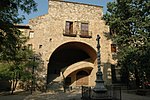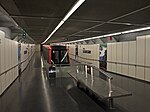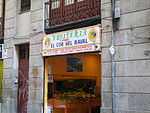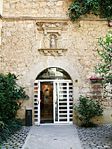Barcelona International Centre of Photography
The Barcelona International Centre of Photography (El Centre Internacional de Fotografia Barcelona, in Catalan language, CIFB) was a singular initiative in the photographic culture of Spain in the second half of the 1970s, becoming a pioneering institution in the formation, study, exhibition, distribution and production of the photographic image. The professional career of its initiator, Albert Guspi (1943-1985), an important innovator and central figure within the new photographic scene of the seventies, culminated in the creation of the CIFB. Despite its brief five-year existence, the CIFB became a reference in the reformation of photographic culture during the Spanish transition to democracy.
Excerpt from the Wikipedia article Barcelona International Centre of Photography (License: CC BY-SA 3.0, Authors).Barcelona International Centre of Photography
Carrer de l'Aurora, Barcelona
Geographical coordinates (GPS) Address Nearby Places Show on map
Geographical coordinates (GPS)
| Latitude | Longitude |
|---|---|
| N 41.378333333333 ° | E 2.1677777777778 ° |
Address
Carrer de l'Aurora 14C
08001 Barcelona (Ciutat Vella)
Catalonia, Spain
Open on Google Maps











